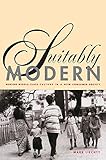Suitably Modern : Making Middle-Class Culture in a New Consumer Society / Mark Liechty.
Material type: TextPublisher: Princeton, NJ : Princeton University Press, [2020]Copyright date: ©2003Description: 1 online resource (312 p.) : 2 maps. 10 halftonesContent type:
TextPublisher: Princeton, NJ : Princeton University Press, [2020]Copyright date: ©2003Description: 1 online resource (312 p.) : 2 maps. 10 halftonesContent type: - 9780691221748
- Consumption (Economics) -- Nepal
- Middle class -- Nepal -- Kathmandu
- SOCIAL SCIENCE / Anthropology / General
- Appadurai, Arjun
- Barthes, Roland
- British colonialism in South Asia
- Butler, Judith
- Doordarshan
- Douglas, Mary
- Foucault, Michel
- Fuglesang, Minou
- Japan
- Kakar, Sudhir
- Kett, Joseph
- Kluge, Alexander
- Musical Hour
- Nepali, G. S
- Rana era
- Ranas
- Schein, Louisa
- Simmel, Georg
- Sloane, Patricia
- Somers, Margaret
- Thapa, Bhim Sen
- Weber, Max
- Wilson, Elizabeth
- code switching
- consumer society
- consumption
- cultivation effect
- development
- drugs (illegal)
- education
- embodiment
- gender
- globalization
- magazines
- media assemblage
- media: and imagination
- modernity
- nationalism
- prostitution
- radio
- remittance economy
- sumptuary laws
- television
- tourism
- video
- youth culture
- 305.5/5/095496 23
- HN670.9.K37 L543 2003eb
- online - DeGruyter
| Item type | Current library | Call number | URL | Status | Notes | Barcode | |
|---|---|---|---|---|---|---|---|
 eBook
eBook
|
Biblioteca "Angelicum" Pont. Univ. S.Tommaso d'Aquino Nuvola online | online - DeGruyter (Browse shelf(Opens below)) | Online access | Not for loan (Accesso limitato) | Accesso per gli utenti autorizzati / Access for authorized users | (dgr)9780691221748 |
Frontmatter -- Contents -- List of Illustrations -- Preface -- Acknowledgments -- PART I: INTRODUCTION -- 1. Middle-Class Construction -- 2. Modern Nepali History and the Rise of the Middle Class -- PART II: CLASS AND CONSUMERISM -- 3. Middle-Class Consciousness: "Hanging between the High and the Low" -- 4. Consumer Culture in Kathmandu: "Playing with Your Brain" -- 5. "Doing Fashion" in Kathmandu: Class and the Consumer Public -- PART III: MEDIA CONSUMPTION IN KATHMANDU -- 6. The Social Practice of Cinema and Video Viewing in Kathmandu -- 7. Media Cultures: The Global in the Local -- PART IV: YOUTH AND THE EXPERIENCE OF MODERNITY -- 8. Constructing the Modern Youth -- 9. Modernity, Time, and Place: Youth Culture in Kathmandu -- PART V: CONCLUSION -- 10. The Space of Class: Toward an Anthropology of Middle-Class Cultural Practice -- Bibliography -- Index
restricted access online access with authorization star
http://purl.org/coar/access_right/c_16ec
Suitably Modern traces the growth of a new middle class in Kathmandu as urban Nepalis harness the modern cultural resources of mass media and consumer goods to build modern identities and pioneer a new sociocultural space in one of the world's "least developed countries." Since Nepal's "opening" in the 1950s, a new urban population of bureaucrats, service personnel, small business owners, and others have worked to make a space between Kathmandu's old (and still privileged) elites and its large (and growing) urban poor. Mark Liechty looks at the cultural practices of this new middle class, examining such phenomena as cinema and video viewing, popular music, film magazines, local fashion systems, and advertising. He explores three interactive and mutually constitutive ethnographic terrains: a burgeoning local consumer culture, a growing mass-mediated popular imagination, and a recently emerging youth culture. He shows how an array of local cultural narratives--stories of honor, value, prestige, and piety--flow in and around global narratives of "progress," modernity, and consumer fulfillment. Urban Nepalis simultaneously adopt and critique these narrative strands, braiding them into local middle-class cultural life. Building on both Marxian and Weberian understandings of class, this study moves beyond them to describe the lived experience of "middle classness"--how class is actually produced and reproduced in everyday practice. It considers how people speak and act themselves into cultural existence, carving out real and conceptual spaces in which to produce class culture.
Mode of access: Internet via World Wide Web.
In English.
Description based on online resource; title from PDF title page (publisher's Web site, viewed 02. Feb 2021)


